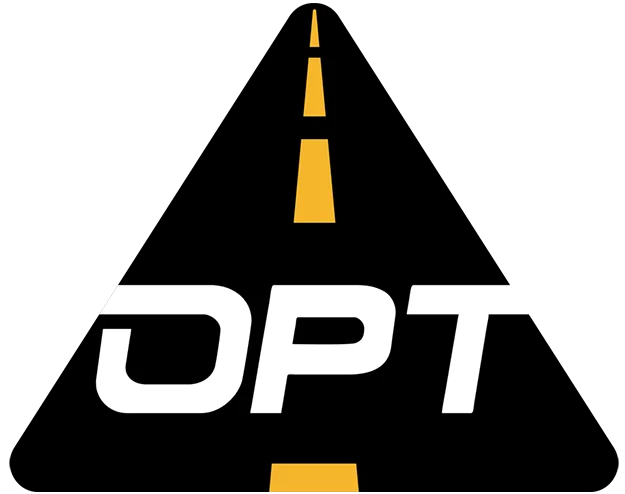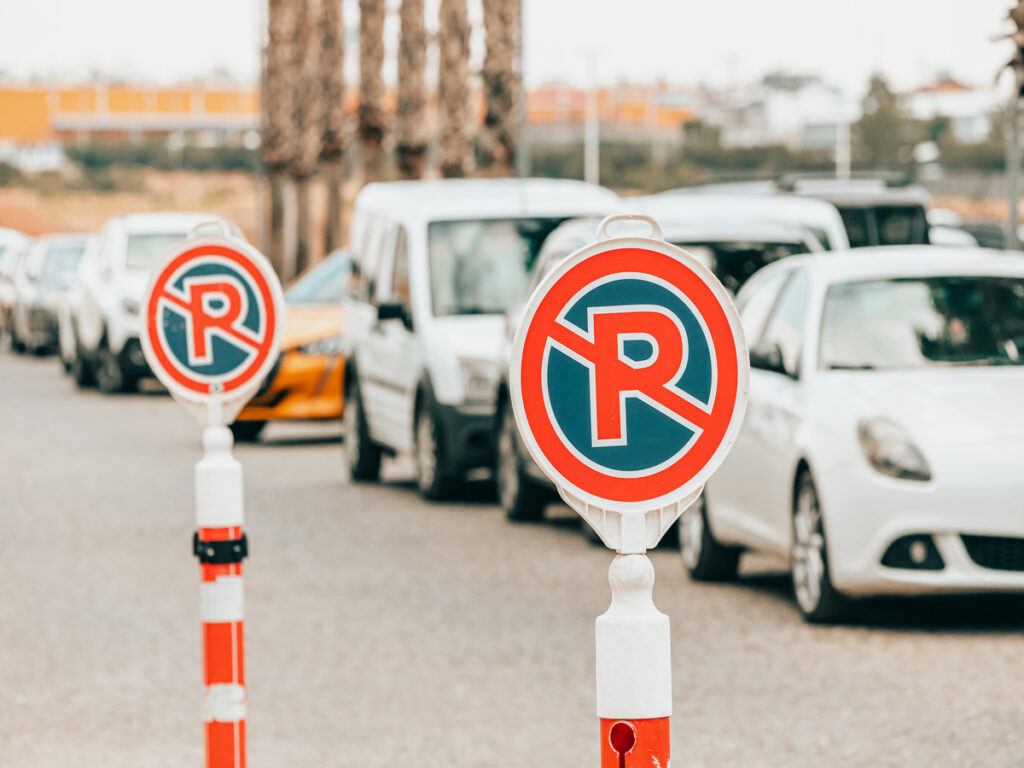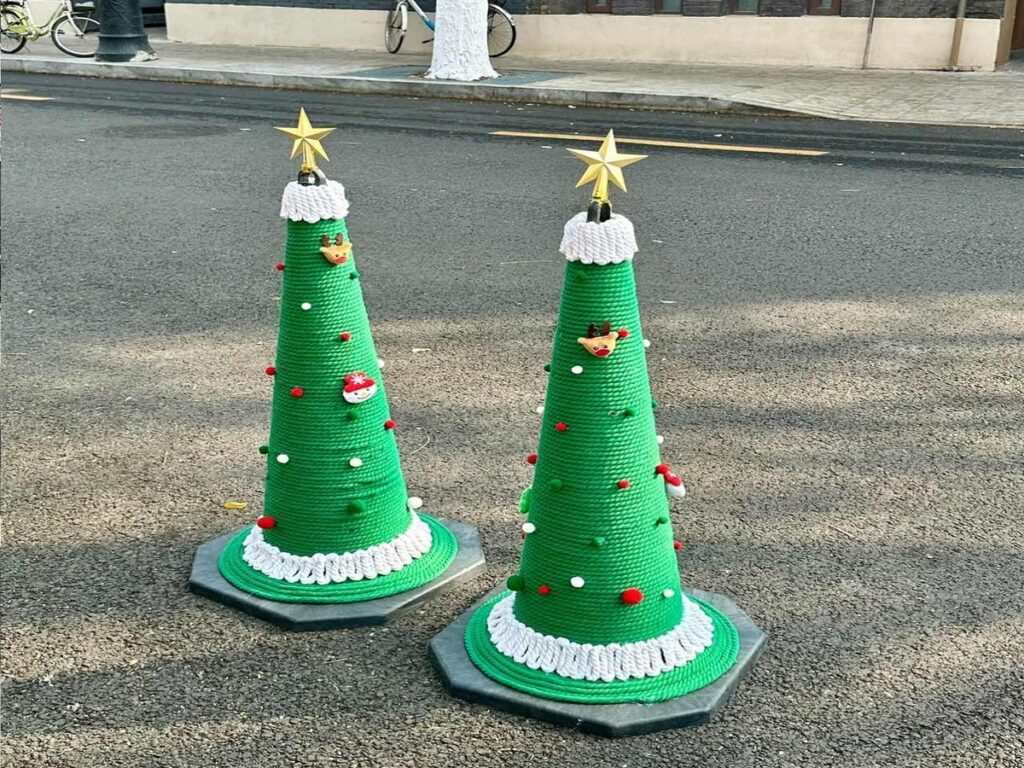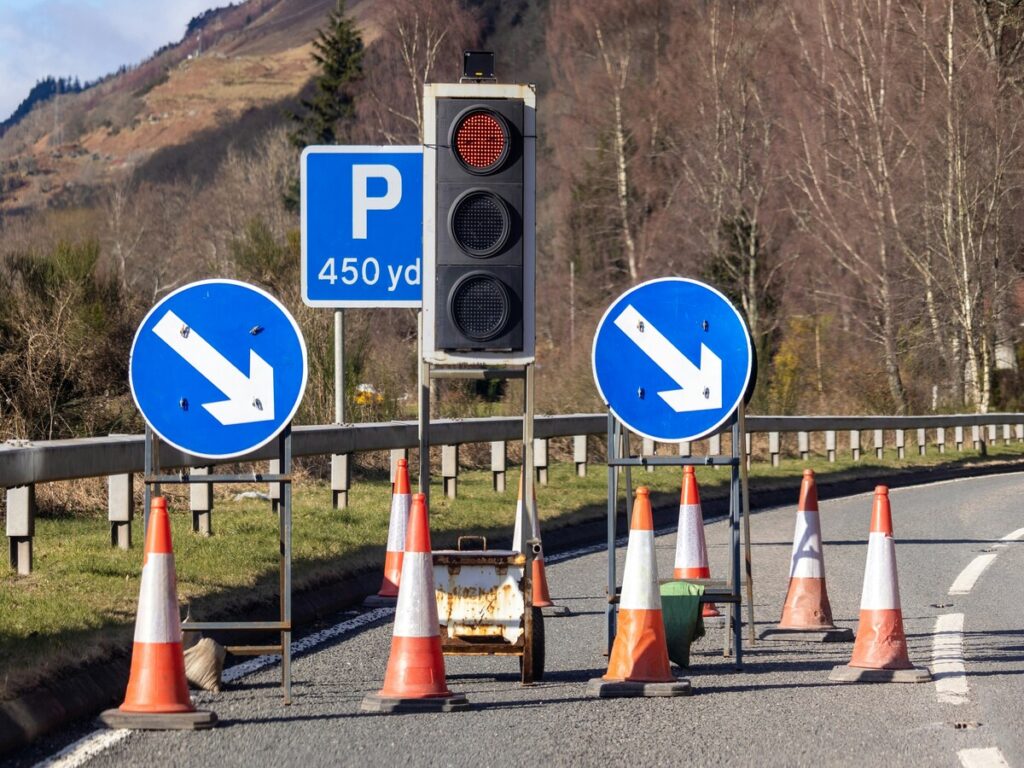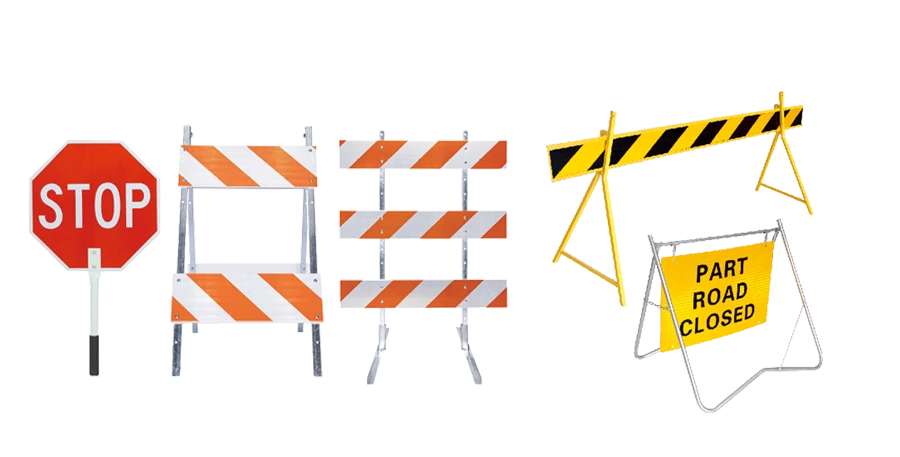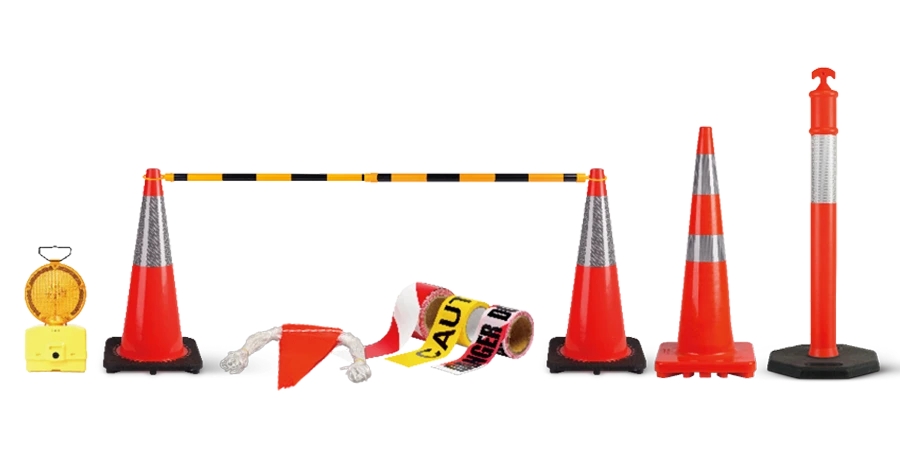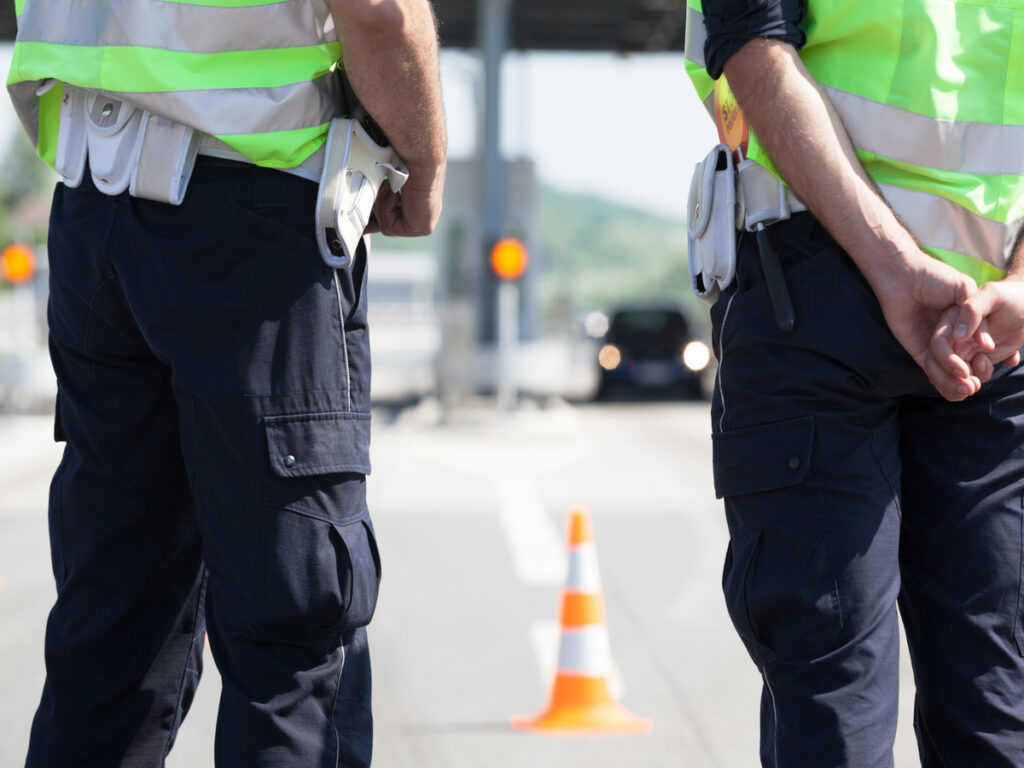
In Notfällen, Polizei und Feuerwehr spielen eine entscheidende Rolle bei der Aufrechterhaltung der Sicherheit. Ihre Spezialwerkzeuge sind für die vorübergehende Verkehrskontrolle unerlässlich. Geräte wie Abschleppwagen und Gefahrensets erleichtern die schnelle Beseitigung von Unfällen. Helle Westen und die richtige Platzierung der Ausrüstung schaffen sichere Zonen. Der richtige Einsatz von Leitkegeln und Schildern sorgt für einen reibungslosen Verkehrsfluss und verringert Risiken. Halten Sie sich an OSHA -Verkehrskegelvorschriften guarantees that these devices are visible and durable, Verbesserung der Gesamtsicherheit.
OPTRAFFIC provides high-quality traffic cones and delineators that are designed to meet OSHA -Verkehrskegelvorschriften, ensuring that your emergency response efforts are effective and compliant. With reflective materials and robust construction, OPTRAFFIC traffic cones Und Kennzeichen zum Verkauf are built to withstand harsh conditions and provide maximum visibility. Whether you’re managing a traffic incident, a construction zone, or an emergency event, OPTRAFFIC has the durable and reliable equipment you need to keep workers, first responders, and the public safe.
Key Takeaways
- Temporary traffic control keeps people and responders safe in emergencies.
- Traffic cones block unsafe spots and guide cars away from danger.
- Placing cones, Barrikaden, and signs correctly helps traffic move smoothly.
- Bright clothing and lights keep responders safe, Besonders nachts.
- Using OSHA-approved cones makes sure they are strong and easy to see.
- Checking traffic tools often keeps them safe and working properly.
- Teaching responders how to set up traffic control is very important.
- Adding markers with cones helps organize traffic and prevent accidents.
Importance of Temporary Traffic Control in Emergency Response
Why Temporary Traffic Control Matters
Keeping responders and people safe during emergencies.
Temporary traffic control helps keep everyone safe in emergencies. Police and firefighters often work in risky places during incidents. Without proper tools, cars might enter dangerous zones and cause harm. Using cones and barricades creates a safe area for emergency teams. This setup stops accidents caused by confused or distracted drivers.
Helping traffic move smoothly near emergency zones.
Managing traffic during emergencies keeps roads working well. Accidents or disasters can block lanes and cause delays. Temporary traffic control helps guide cars around the problem safely. Programme wie Maryland’s CHART show how good traffic plans save time. CHART cut incident times by seven minutes, helping teams reach victims faster. Quick cleanup saves lives and reduces delays for other drivers.
Situations That Need Temporary Traffic Control
Car crashes and closed roads.
Car accidents can make roads chaotic. You might see blocked lanes, damaged cars, or hurt people. Traffic control tools like safety cones and signs are very helpful. They guide cars away from crash sites so responders can work safely. Closed roads also need clear signs to avoid confusion. Florida’s TIM program shows how fast traffic control helps. Their Road Rangers assist quickly, keeping traffic moving during emergencies.
Fires, Chemische Verschüttungen, and natural disasters.
Emergencies like fires or chemical spills need fast action. These events often require blocking areas to keep people safe. Barricades and markers direct cars away from danger zones. Natural disasters like floods or earthquakes also mess up traffic. Temporary traffic control lets rescue teams reach affected areas quickly. Florida’s RISC program shows why fast traffic management matters. Clearing big incidents quickly helps restore safety and order on roads.
Essential Equipment Used by Police and Firefighters
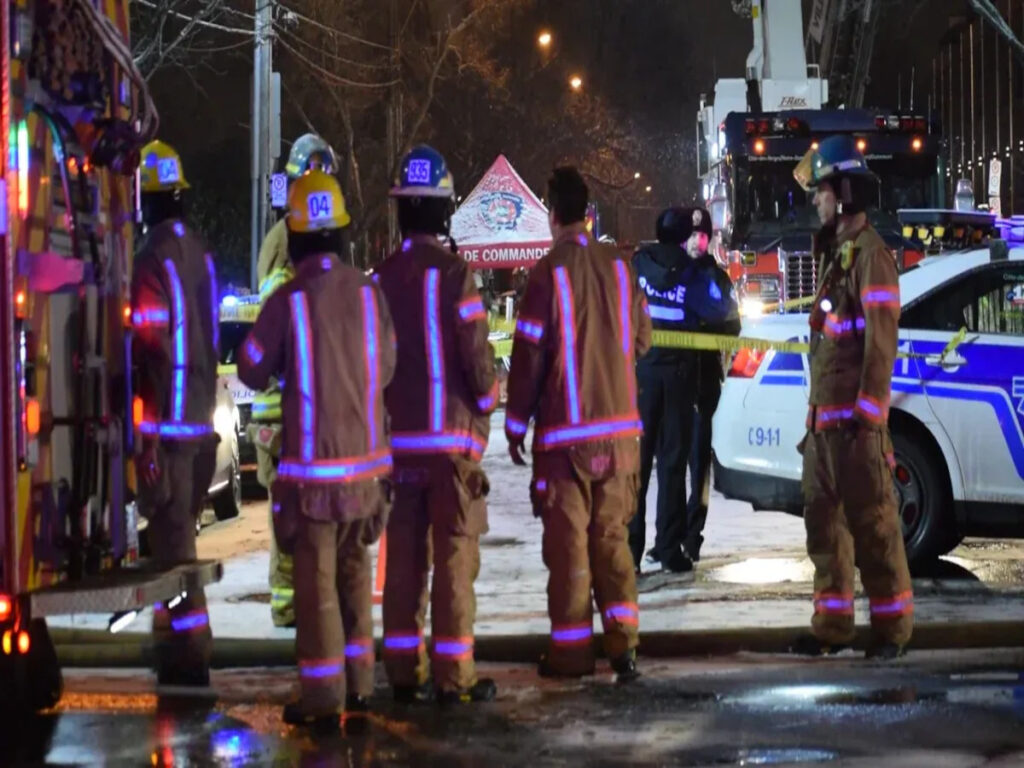
Verkehrskegel
Blocking dangerous spots and guiding traffic.
Traffic cones are very useful for emergency traffic control. They block off unsafe areas like crash sites or chemical spills. Their bright orange color makes them easy to see. Drivers slow down and follow the path marked by safety cones. Studies show safety cones help drivers obey detours and speed limits. The MUTCD says emergency vehicles should use at least 16 Kegel. Tall, reflective cones work best on fast roads or at night.
Making safe zones around emergencies.
Cones create safe spaces for responders to work. Their reflective surfaces make them visible even in the dark. Placing safety cones carefully keeps cars away from responders and victims. This reduces the chance of more accidents. Cones are simple but very important for keeping order during emergencies.
Barricades and Signs
Showing road closures and detours.
Barrikaden Und Sicherheitsschilder clearly mark closed roads and detours. They help drivers know how to safely get around emergency areas. Different barricades have different uses. Zum Beispiel:
| Type of Barricade/Sign | Schlüsselmerkmale | Sichtbarkeitsanforderungen |
|---|---|---|
| Breakaway Sign Posts | Lowers crash risks | Easy to see during emergencies |
| Typ 1 & Typ 2 Barrikaden | Common for road closures | Reflective for nighttime use |
| Typ 3 Barrikaden | For big roads | Very stable and visible |
| A-Frame-Barrikaden | Simple to move and set up | Bright colors for attention |
| Wassergefüllte Barrieren | Stays steady in strong winds | Highly visible in emergencies |
These tools reduce confusion and prevent accidents by guiding drivers.
Giving clear directions to drivers.
Signs and barricades also tell drivers what to do. Breakaway signposts make roads safer by lowering crash impacts. Reflective barricades are easier to see at night. Using these tools well helps drivers understand new traffic patterns. This keeps everyone safe near emergency zones.
High-Visibility Clothing and Lighting Equipment
Helping responders stand out in the dark.
Kleidung mit hoher Sichtbarkeit keeps responders safe, Besonders nachts. Bright vests with reflective strips make them easy to spot. Groups like OSHA stress the need for this gear to prevent injuries. These vests are helpful when responders don’t wear full protective suits.
Using lights and reflective gear for extra safety.
Flashing lights make emergency scenes visible from far away. Reflective gear works with lights to improve visibility. Zusammen, they create a safer space for responders and drivers. These tools lower the risk of accidents in dangerous areas.
OSHA-Verordnung zu Leitkegeln
Overview of OSHA Standards
Rules for cone size, Farbe, und Reflexionsvermögen.
OSHA has OSHA -Verkehrskegelvorschriften for using traffic cones in emergencies. These OSHA traffic cone regulations make sure cones are easy to see and protect people. Auf Autobahnen, safety cones must be at least 28 Zoll groß. They also need reflective materials to stay visible in dim light. The reflectivity must meet OSHA and MUTCD standards.
| Erfordernis | Spezifikation |
|---|---|
| Kegelhöhe | Mindestens 28 Zoll für Autobahnen |
| Reflektierendes Material | Must meet OSHA and MUTCD standards |
Rules for strength and placement.
Cones must be strong enough to handle bad weather and busy roads. Where you place safety cones is just as important. OSHA says safety cones should guide cars safely and mark emergency zones clearly. Zum Beispiel, emergency vehicles should use at least 16 Kegel. Taller cones are better for fast-moving traffic areas.
Keeping Everyone Safe by Following Rules
How OSHA rules protect people.
Following OSHA traffic cone regulations makes everyone safer. These rules have lowered injuries and deaths over time. Zum Beispiel, worker injuries dropped from 10.9 pro 100,000 In 1970 Zu 2.7 In 2022. Traffic cones help by making work zones more visible. Placing cones correctly keeps both responders and drivers safe.
Why using approved cones matters.
Using safety cones that meet OSHA traffic cone regulations is very important. Cones that don’t follow the rules might not be strong or bright enough. This can put responders and others in danger. Always check that cones meet OSHA’s size, Reflexionsvermögen, and placement rules. This helps prevent accidents and lets responders do their jobs safely.
Rules for Emergency Responders
Teaching responders about OSHA rules.
Training responders on OSHA traffic cone regulations is very important. They need to know how to use safety cones and stay safe. Training should include how to place cones, wear safety gear, and handle road emergencies. Zum Beispiel, responders should learn to spot dangers and use PPE correctly.
Checking cones to meet safety rules.
It’s important to check cones often for damage or fading. Broken safety cones can’t keep people safe or meet OSHA rules. Regular checks make sure cones are ready to use in emergencies. This helps responders stay prepared and keeps everyone safe.
Tipp: Always keep records of training and equipment checks. This shows you follow OSHA rules and helps during inspections or audits.
Best Practices for Emergency Traffic Control Setup
Step-by-Step Guide to Setting Up a Traffic Control Zone
Checking the area and spotting dangers.
When you get to an emergency, check the area first. Look for dangers like broken cars, spilled liquids, or blocked roads. Think about risks to both responders and the public. Zum Beispiel, a sharp turn or dim lighting could cause more accidents. Use this check to make a safety plan for traffic control.
Training is very important for this step. Everyone should know how to check road incidents and wear safety gear like bright vests. Good training helps everyone understand their job in keeping the area safe. Working with other teams also makes things faster. Talking to them helps find dangers quickly and set up a safer zone.
Placing cones, Barrikaden, and signs smartly.
After finding dangers, start setting up emergency cones, Barrikaden, und Zeichen. Put emergency cones where they block unsafe spots and guide cars safely. Use reflective cones so drivers can see them at night. Barricades should clearly show closed roads or detours. Signs need to give clear directions like “Umweg voraus” oder “Road Closed.”
Park emergency vehicles to make a safety buffer between traffic and workers. This setup keeps everyone safer. Place traffic tools carefully to keep cars moving smoothly around the scene. Zum Beispiel, space emergency cones evenly to guide drivers better. A neat setup avoids confusion and stops more accidents.
Häufige Fehler zu vermeiden
Spacing cones too far apart.
If emergency cones are too far apart, Fahrer könnten verwirrt werden. They need clear signs to know where to go. Place emergency cones evenly based on the road speed and conditions. Auf schnellen Straßen, use taller emergency cones and put them closer together. Following these tips helps drivers stay safe and avoid danger zones.
Ignoring visibility at night.
Not thinking about nighttime visibility can make things unsafe. Drivers may not see emergency cones or signs in the dark. Always use reflective cones, Barrikaden, und Zeichen. Flashing lights can make them even easier to see. These steps make your traffic control work well, sogar nachts. Check your tools often to ensure they stay visible.
Tipp: Always review your setup after placing everything. Walk through the area to make sure cones, Barrikaden, and signs are easy to see and spaced correctly.
The Role of Cones and Delineators in Emergency Traffic Control
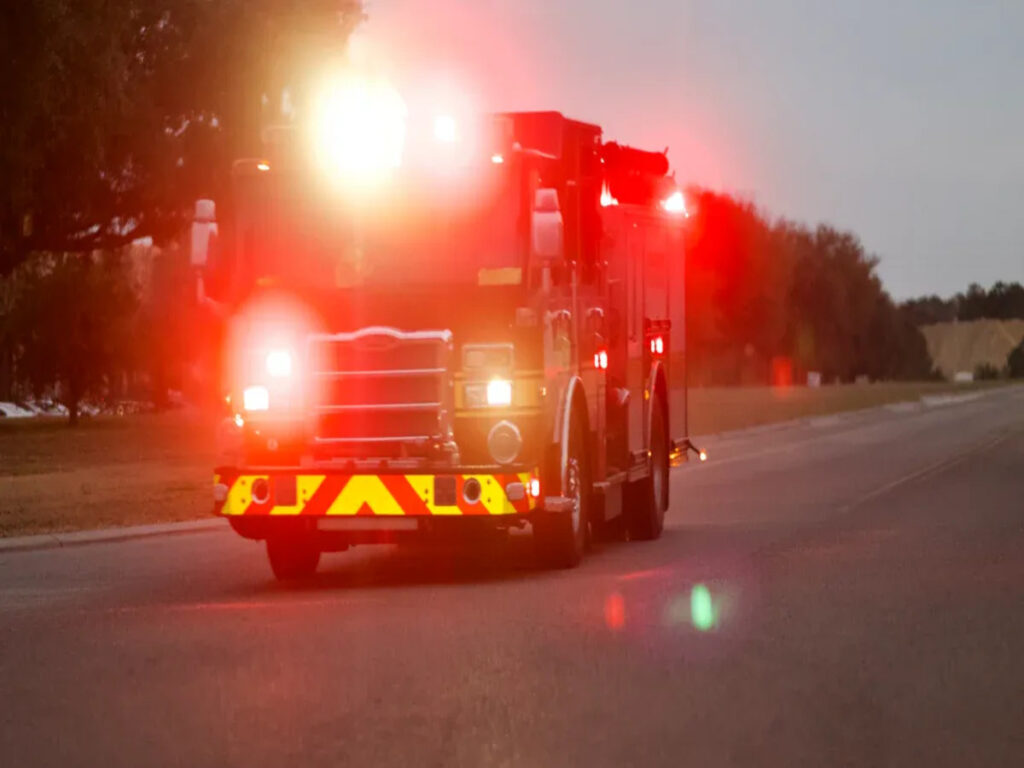
Verkehrskegel
Blocking dangerous areas and guiding traffic.
Traffic cones are very important for emergency traffic control. They block off unsafe spots like crash sites or chemical spills. This keeps cars away from danger and people safe. Their bright orange color and reflective surfaces make them easy to see. Even in the dark, drivers notice cones and slow down. Cones help guide cars safely, lowering the chance of more accidents.
| Metrisch | Beschreibung |
|---|---|
| Vehicle Speeds | Cones make drivers slow down and follow speed limits. |
| Fahrerverhalten | Drivers focus better and avoid distractions when they see cones. |
| Fußgängersicherheit | Cones create safe paths for people walking near danger zones. |
| Kosteneffizienz | Cones are reusable, umweltfreundlich, and cheaper than permanent tools. |
Placing cones smartly helps traffic move safely around emergency areas.
Making safe zones for responders.
Cones are key to creating safe spaces for emergency workers. When placed around an accident, cones act as barriers to keep cars away. This protects both responders and victims from harm. Reflective cones work well at night because drivers can see them from far away. Studies show cones improve safety by clearly separating cars from walkways.
Abgrenzer
Helping drivers through changed road setups.
Delineators are also useful for emergency traffic control. These tall markers guide cars through detours or temporary lanes. Their reflective surfaces make them visible even in bad weather or low light. Drivers use delineators to stay on the right path, Reduzierung von Verwirrung und Abstürzen.
- Better night safety: Reflective markers make roads easier to see in the dark.
- Stark und flexibel: Delineators handle bumps without breaking, länger dauern.
- Less traffic jams: Cars move faster, cutting travel time by 25% während der Stoßzeiten.
- Weniger Unfälle: Die Crash -Raten sinken um 30% with delineators keeping cars in lanes.
Using delineators helps keep traffic organized and safe during emergencies.
Marking detours and road changes.
When roads are closed or rerouted, delineators show drivers where to go. They mark temporary paths, helping cars follow the correct route. Hergestellt aus robusten Materialien, delineators hold up in bad weather and heavy traffic. They also reduce congestion by helping drivers adjust to new road patterns quickly.
OSHA -Konformität
Following rules for visibility and strength.
Cones and delineators must meet OSHA rules for safety. High-quality cones are bright and easy to see, Unfälle zu verhindern. Strong materials like PVC and rubber make cones last longer in tough conditions. Reflective delineators improve night safety by marking lanes and edges clearly.
- Bright cones lower accident risks by improving visibility.
- Tough materials keep cones and delineators usable in harsh weather.
- OSHA compliance shows a focus on safety and reduces legal risks.
Using OSHA-approved tools keeps everyone safer during emergencies.
Placing cones and delineators correctly.
Where you put emergency cones and delineators matters a lot. Place them to guide traffic and mark danger zones clearly. Reflective tools should be spaced so drivers can see them easily. Check emergency cones and delineators often to ensure they meet OSHA standards. Careful placement and inspections make emergency zones much safer.
Tipp: Always confirm your traffic cones and delineators meet OSHA rules before using them. This ensures they work well and follow safety guidelines.
Fallstudien: How Cones and Delineators Save Lives
Road Traffic Accident
Keeping responders and victims safe by redirecting traffic.
Wenn Unfälle passieren, traffic cones and delineators help keep people safe. Cones block off crash areas, giving responders space to work. Drivers notice the bright cones and slow down or change lanes. This setup stops cars from entering dangerous spots, alle schützen. Zum Beispiel, cones in neighborhoods separate bike lanes from cars during emergencies. This keeps pedestrians and cyclists safe while traffic moves smoothly.
Avoiding more accidents with proper placement.
Secondary crashes can occur when drivers are confused near emergencies. Placing cones and delineators correctly lowers this risk. They guide cars through safe detours or temporary lanes. In Bauzonen, cones manage lanes and show detours during roadwork. This setup reduces confusion and prevents crashes by marking paths clearly. A well-planned layout helps drivers know where to go, avoiding further accidents.
Fire or Hazardous Material Spill
Directing traffic safely around danger zones.
Fires and spills need quick action to protect people. Delineators are great for guiding traffic away from danger. Ihre reflektierenden Oberflächen machen sie leicht zu sehen, Auch bei schlechtem Wetter oder nachts. Bei Ereignissen, traffic cones and delineators organize foot traffic and create clear paths. This method reduces crowding and boosts safety, working well in emergencies too.
Keeping people safe by following OSHA rules.
Using OSHA-approved cones and delineators ensures safety during emergencies. These tools must meet visibility and strength standards. Reflective delineators make detours and road changes clear for drivers. Following these rules prevents accidents and keeps people safe. Marked zones also let emergency teams work faster without interruptions.
Natural Disaster Response
Restoring order with traffic control after disasters.
Floods and earthquakes can cause traffic chaos. Cones and delineators help set up temporary zones to restore order. They mark safe routes for cars and pedestrians, keeping them away from danger. Zum Beispiel, cones used during festivals reduce congestion and organize pathways. This same idea works in disasters, ensuring safety and smooth movement.
Helping rescue teams reach disaster zones quickly.
Rescue workers need clear roads to get to affected areas fast. Cones and delineators create safe lanes for emergency vehicles. Reflective markers help at night, making roads easier to navigate. By guiding traffic and marking hazards, responders can focus on their tasks without delays. This setup saves both time and lives.
Notiz: Using traffic cones and delineators properly during emergencies greatly improves safety. Always check that your equipment meets OSHA standards for the best results.
Temporary traffic control is important for safety during emergencies. Werkzeuge wie Verkehrskegel, Barrikaden, and bright gear help manage traffic. These tools keep areas safe and guide cars away from danger.
Tipp: Make sure your tools follow OSHA -Standards. This ensures they are visible, stark, und alle beschützen.
Setting up correctly and following good practices keeps traffic moving. These steps lower risks and make emergencies safer and more efficient.
FAQ
What is the purpose of temporary traffic control during emergencies?
Temporary traffic control keeps responders and people safe. It helps cars avoid dangerous spots and creates safe work areas. Good traffic management stops confusion and prevents more accidents.
Why are traffic cones essential in emergency response?
Traffic cones block unsafe areas and guide cars safely. Their bright color and reflective surfaces make them easy to see anytime. Cones also protect responders by creating safe zones during emergencies.
How do delineators differ from traffic cones?
Delineators are taller and stronger than cones. They help cars move through detours or changed roads. Their reflective surfaces make them visible at night or in bad weather, perfect for marking new lanes.
What are OSHA’s requirements for traffic cones?
OSHA traffic cone regulations say cones must meet size, Farbe, und Reflexionsregeln. Auf Autobahnen, Kegel müssen sein 28 inches tall with reflective parts for night use. These rules keep everyone safe during emergencies.
How can you ensure traffic control equipment meets OSHA standards?
Check equipment often for damage or fading. Use strong cones and delineators with good reflectivity. Train responders on OSHA traffic cone regulations to place and use tools correctly during emergencies.
What is the best way to set up a traffic control zone?
Look for dangers and plan the setup. Place emergency cones, Barrikaden, and signs to guide cars and protect workers. Use reflective tools for night safety. Check the setup often to keep it safe.
Why is high-visibility clothing important for responders?
High-visibility clothing helps responders stand out, Auch bei schwacher Licht. Reflective vests and gear make them safer by lowering accident risks. OSHA says this gear is important for protecting emergency teams.
Can weather affect traffic control equipment?
Ja, bad weather like rain or wind can harm equipment. Use strong traffic cones and delineators that can handle tough conditions. Check them often to make sure they stay visible and useful during emergencies.
Tipp: Always pick high-quality, OSHA-approved tools to stay safe and ready in any weather.
